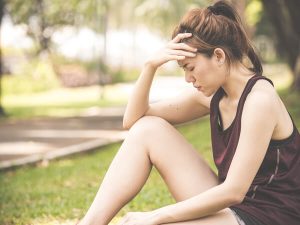6 Tips for Outdoor Heat Safety
 According to the Centers for Disease Control and Prevention, there are about 330 heat-related fatalities every year. The hot summer months can cause body temperatures to rise to unsafe levels, especially when combined with strenuous work. Outdoor workers are also be vulnerable to heat-related illnesses since they spend long periods in direct sunlight.
According to the Centers for Disease Control and Prevention, there are about 330 heat-related fatalities every year. The hot summer months can cause body temperatures to rise to unsafe levels, especially when combined with strenuous work. Outdoor workers are also be vulnerable to heat-related illnesses since they spend long periods in direct sunlight.
There are many types of heat illnesses, such as heat stroke, heat exhaustion, dehydration and heat cramps. Each of these conditions have various symptoms, but they commonly cause dizziness, weakness, nausea, blurred vision, confusion or loss of consciousness.
Here are some tips for staying safe in the heat while outdoors:
- Dress for the weather. Wear loose, light-colored, lightweight clothing so your skin gets air exposure.
- Protect. Shield your head and face from direct sunlight by wearing a hat and sunglasses.
- Take regular breaks. Rest in a shaded area. If you’re wearing heavy protective gear, consider removing it to help cool off even more.
- Avoid overexerting yourself during the hottest hours of the day.
- Drink water frequently, even if you aren’t thirsty. Experts recommend drinking at least eight ounces every 20 to 30 minutes to stay hydrated. Stick to water, fruit juice and sport drinks and avoid caffeinated beverages, as they can dehydrate you.
- Eat light. Replace heavy or hot meals with lighter, refreshing foods. And always eat smaller meals before work or intense activity.
Heat illnesses can usually be treated by being moved to a cooler area and drinking cool liquids. In extreme cases when heat illnesses cause unconsciousness, health care professionals should be alerted immediately. Here are signs of heat illness:
Heat Exhaustion
Heat exhaustion occurs when a person cannot sweat enough to cool the body—usually the result of not drinking enough fluids during hot weather. It generally develops when a person is playing, working or exercising outside in extreme heat. Symptoms include the following:
- Dizziness, weakness, nausea, headache and vomiting
- Blurry vision
- Body temperature rising to 101°F
- Sweaty skin
- Feeling hot and thirsty
- Difficulty speaking
A person suffering from heat exhaustion must move to a cool place and drink plenty of water to avoid a more severe heat-related condition—heat stroke.
Heat Stroke
Heat stroke is the result of untreated heat exhaustion. Symptoms of Heat Stroke include the following:
- Sweating stops
- Unawareness of thirst and heat
- Body temperature rising rapidly to above 101°F
- Confusion or delirium
- Possible loss of consciousness or seizure
Heat stroke is a serious medical emergency that must be treated quickly by a trained professional. Until help arrives, cool the person down by placing ice on the neck, armpits and groin. If the person is awake and able to swallow, have them drink a small glass of water every 15 minutes or until help arrives.
Source: © 2019 Zywave, Inc. All rights reserved.